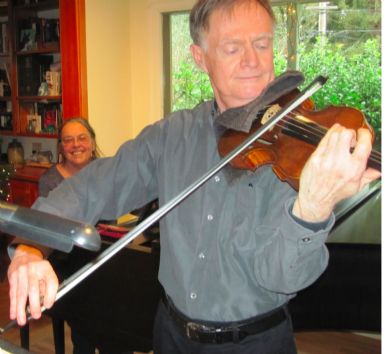|
Chamber
OAKMONT SEASON CLOSES WITH STRAUSS' PASSIONATE SONATA
by Terry McNeill
Thursday, April 11, 2024
Chamber
MORE GOLD THAN KORN AT ALEXANDER SQ CONCERT
by Terry McNeill
Sunday, April 7, 2024
Choral and Vocal
VIBRANT GOOD FRIDAY REQUIEM AT CHURCH OF THE ROSES
by Pamela Hicks Gailey
Friday, March 29, 2024
TWO OLD, TWO NEW AT THE SR SYMPHONY'S MARCH CONCERT IN WEILL
by Peter Lert
Saturday, March 23, 2024
Chamber
NOT A SEVENTH BUT A FIRST AT SPRING LAKE VILLAGE CONCERT
by Terry McNeill
Wednesday, March 20, 2024
THIRTY-THREE PLUS VARIATIONS AND AN OCEAN VIEW
by Terry McNeill
Saturday, March 16, 2024
Choral and Vocal
A ST. JOHN PASSION FOR THE AGES
by Abby Wasserman
Friday, March 8, 2024
Choral and Vocal
SPLENDID SCHUBERT SONGS IN SANET ALLEN RECITAL
by Terry McNeill
Saturday, March 2, 2024
Chamber
SHAW'S MICROFICTIONS HIGHLIGHTS MIRO QUARTET'S SEBASTOPOL CONCERT
by Peter Lert
Friday, March 1, 2024
Chamber
FRY ST. SQ PLAYS A DEMANDING 222 GALLERY CONCERT
by Terry McNeill
Friday, March 1, 2024
|
 |
 Sonia Tubridy (l) and Richard Heinberg Dec. 30 in Guerneville |
HOME RECITAL BACH COMPLETES HOLIDAY SEASON
by Terry McNeill
Saturday, December 30, 2017
The just closing 2017 year was a calamity for many, but locally in music there were joys galore, and it was fitting Dec. 30 have the balm of two Bach’s violin sonatas in a private Guerneville home recital hosted by the eminent musician Sonia Tubridy.
Violinist Richard Heinberg joined Ms. Tubridy in a program that began with the C Minor Sonata, BWV 1017. Both the four-movements Sonatas featured judicious tempos and made minimal reference to current Baroque music practices of minimal vibrato, slight ritards and lower string-tension sound. Repeats were carefully taken and the sadness and lament character of much of the music came through clearly in the long opening largo and the third-part adagio. Balances were occasionally a problem with Ms. Tubridy’s piano line covering the violin part, and Mr. Heinberg’s intonation can waver in extended single notes.
In the complex second movement allegro the violinist’s trills were secure and the playing was agile and convincing. The allegro finale displayed a fugue that took time to develop, and the duo played deftly the many thematic transformations and inversions.
Finishing the afternoon was the E Major Sonata (BWV 1016), a more sunny work built on the same slow-fast-slow-fast movement structure as the C Minor. The beginning adagio was played romantically in a deliberate tempo, emphasizing the march-like rhythms, and the adagio ma non tanto had traits of a yearning love song, with a mysterious ending. There wasn’t a hint of schmaltz.
To sharp applause one encore was offered, the opening (andante) movement from the Bach A Major Second Sonata (BWV 1015).
Between the two Sonatas the duo adroitly demonstrated technical details of the works, including encompassing three lines (two separate ones in the piano and one in the violin line) and Bach’s frequent use of dissonance. The examples they presented of contrapuntal writing in the E Major’s second movement were especially enlightening.
|

